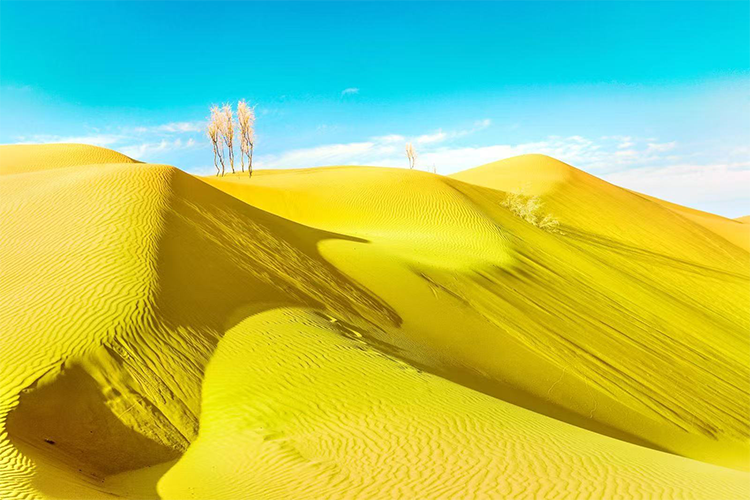Exploring Tengger Desert Wetland: Jinsha Island, Ningxia’s Hidden Oasis
Introduction
Imagine a golden sea of sand parting to reveal sapphire-blue lakes — not a mirage but Jinsha Island in the Tengger Desert Wetland, Zhongwei, Ningxia. Called the “lungs of the desert,” this 22-square-kilometer oasis interlaces green wetlands with dune edges to create one of Northwest China’s most dramatic ecological spectacles. By day, flocks of waterbirds skim the reedbeds; at dusk, camel silhouettes reflect on mirror-like water. This rare arid-zone wetland overturns every expectation you have of deserts.
1. Sand and Wetland’s Magical Symbiosis
“Half sand, half water” is the soul of Jinsha Island. As a national water landscape park, it showcases the resilience of desert wetland ecosystems. Over millennia, Yellow River tributaries and groundwater seepage along the Tengger’s margin formed a scatter of lakes where drought-tolerant dune plants and aquatic vegetation engage in a quiet struggle for survival. From the viewing platform you can see golden dunes embracing emerald waters — like an artist’s spilled palette.
2. A Natural Theater of Four Seasons
• Spring (Mar–May): Snowmelt feeds the lakes, young reeds sway, and migratory birds such as egrets stop here—prime birdwatching season.
• Summer (Jun–Aug): Thousands of lotus flowers bloom, filling the desert with a subtle fragrance; nights bring unforgettable desert starry skies.
• Autumn (Sep–Nov): Golden reeds match the dunes’ tones as flocks of wild ducks trace the water—favorite light for photographers.
• Winter (Dec–Feb): Frozen lake surfaces create natural mirrors; snow softens dune contours into elegant lines.
Best time to visit: May–October (July–August sees lotus peak and higher visitor numbers; mornings are recommended).
3. Eco-Adventures and Cultural Experiences
Beyond a scenic boat ride through the reed maze (40 CNY per person), you can:
• Join guided desert-wetland hikes (appointment required) to seek rare birds like the black stork.
• Try desert fishing — gear rental available in the park.
• Visit the Wetland Education Center to learn about the desert water cycle and local conservation efforts.
• Camp at the stargazing area at dusk and observe the clear Northwest Milky Way through telescopes.
Nearby Shapotou (20 minutes by car) pairs well for sandboarding, Yellow River leather-raft rides, and other adventure activities.

4. Practical Visitor Information
Transport:
• By car from Yinchuan: about 2 hours (via Jingzang and Dingwu expressways).
• Public transit: long-distance bus from Yinchuan to Zhongwei (approx. 2.5 hours), then a tourist shuttle (about 40 minutes).
Tickets and opening hours:
• Peak season (Apr–Oct): 80 CNY per person, includes the Wetland Museum; boat rides and special experiences cost extra.
• Opening hours: 08:00–18:30 (extended to 19:30 in summer).
Facilities:
• An eco-restaurant at the park entrance serves Yellow River carp and local sand onion dishes.
• English signage covers major sites; multilingual audio guides are rentable (deposit 200 CNY).
Accommodation:
• On-site tented hotels available, or return to Zhongwei city for four-star hotels (around 300 CNY/night).
5. Travel Tips
• Desert temperatures swing widely — bring a windproof layer even in summer.
• Best photography spot: the “Emerald Lake Viewing” platform; aim for one hour after sunrise.
• Daily park capacity is limited to 5,000 visitors—buy tickets online one day in advance for holidays.

Conclusion
While many travelers chase the waterways of southern China, Jinsha Island reveals a different, wilder beauty where ruggedness and tenderness coexist. Stepping where desert meets wetland is more than sightseeing — it’s a dialogue between aridity and abundance. Your footprints on that border mark a pilgrimage to a living natural miracle.


